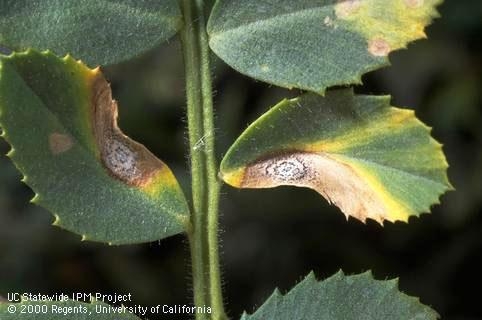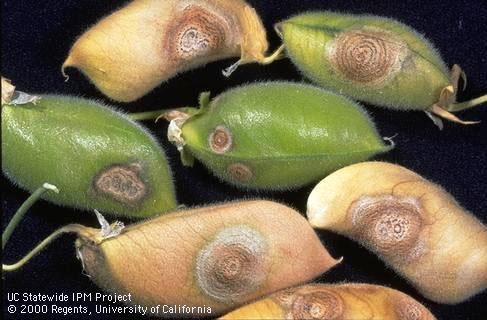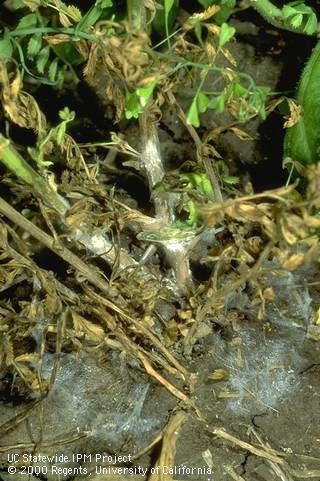A pest control advisor recently contacted us to ask what pests he should be scouting for in garbanzo beans. His clients had not grown garbanzos in the past but have some acreage this year. Given recent wet weather and relatively mild temperatures, there are three diseases for which we suggest keeping an eye out.
Figure 1. Ascochyta blight on garbanzo bean leaves.
Figure 2. Ascochyta blight on garbanzo bean pods.
Figure 3. Alfalfa mosaic virus in garbanzo beans.
Lastly, white mold (Sclerotinia sclerotiorum and S. trifoliorum) may be a problem in garbanzos this year, like Ascochyta blight, because of the wet conditions. White mold may appear as a watery rot on stems, leaves, and pods. Figure 4. White mold on garbanzo bean stem.
Information on products and practices is for educational purposes only and does not constitute an endorsement or recommendation by the University of California.







